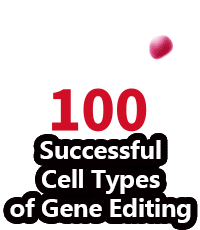A team from Russia, China, Germany, and elsewhere share results from single-cell RNA sequencing- and bulk RNA-seq-based analyses of gene expression in samples from different brain regions in hundreds of humans, chimpanzees, bonobos, and rhesus macaques. With data on 33 anatomical brain regions in samples from 422 individuals, including more than 88,000 individual cells from three brain regions, the researchers saw more pronounced gene expression shifts in non-neuronal cells in the human lineage. "At the cellular level, astrocytes and oligodendrocyte progenitors displayed more differences in the human evolutionary lineage than the neurons," they report, noting that "conventional RNA sequencing did not detect up to two-thirds of cell-type-specific evolutionary differences."
Researchers from Spain and Portugal describe inversions and breakpoint inverted repeats identified in human genomes using their linkage-based droplet digital PCR screening assays. Using these and other approaches, the team validated more than a dozen inversions spanning thousands to hundreds of thousands of bases from the set of 20 inversions analysed initially. When they applied a similar strategy to sequencing data for nearly 100 individuals with African, European, and East Asian ancestry, meanwhile, the authors characterized 16 new and known inversions. "Through comparison with previous data, independent replicates, and both inversion breakpoints," they write, "we demonstrate that the technique is highly accurate and reproducible."
University College Dublin investigators highlight centromere location polymorphisms in the pathogenic yeast species Candida parapsilosis. In an effort to map centromere locations and understand the evolution of centromeres in the clade that contains C. parapsilosis, the team used available genome sequences, chromatin immunoprecipitation sequencing, CRISPR-Cas9-based gene editing, and comparative genomics to uncover variable centromere locations from one C. parapsilosis strain to the next. "We do not know how frequent centromere location polymorphism is in C. parapsilosis," the authors note, "but the fact that we observed it in one of only two strains tested, affecting two of eight chromosomes, suggests it is not rare."
Ubigene Biosciences is co-founded by biological academics and elites from China, the United States, and France. We are located in Guangzhou Science City, which serves as a global center for high technology and innovation. Ubigene Biosciences has 1000㎡ office areas and laboratories, involving genome editing, cell biology technology, and zebrafish research. We provide products and services for plasmids, viruses, cells, and zebrafish. We aim to provide customers with better gene-editing tools for cell or animal research.
We developed CRISPR-U™ and CRISPR-B™(based on CRISPR/Cas9 technology) which is more efficient than general CRISPR/Cas9 in double-strand breaking, CRISPR-U™ and CRISPR-B™ can greatly improve the efficiency of homologous recombination, easily achieve knockout (KO), point mutation (PM) and knockin (KI) in vitro and in vivo.
Genome Editing Platform
——Focusing on the Application of CRISPR-U™ and CRISPR-B™ Gene Editing Technology
Cell Biology Platform
——Focusing on primary cell
2. Provides culture strategies and related products for different cell types.3. Provides cell biology-related services such as cell isolation, extraction and validation.
